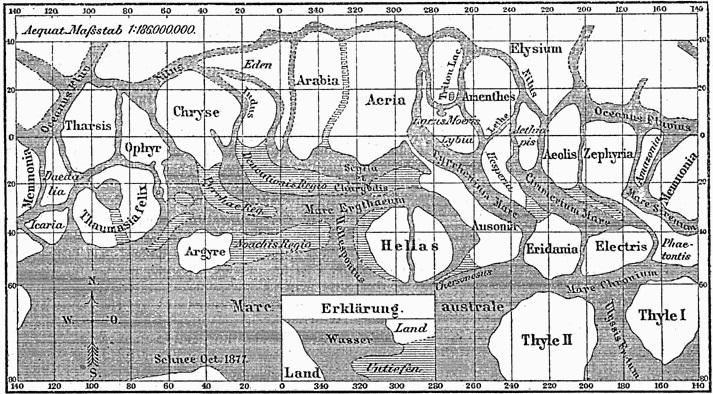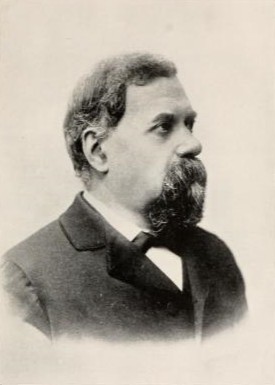- IT HAPPENEDScience
- 5 de September de 2024
- No Comment
- 7 minutes read
Mars and Schiaparelli’s “canals”

IT HAPPENED…
On September 5, 1877
Mars and Schiaparelli’s “canals”


On September 5, 1877, the Italian astronomer Giovanni Schiaparelli (1835-1910) claimed to have discovered mysterious canals that crisscrossed its surface. He had been for a long time studying the planet Mars in detail with his telescopes and he had undertaken the task of drawing up its first map. As the news about canals in Mars spread, the possibility that these canals were artificial soon began to be considered, which would, in turn, be a proof of the existence of intelligent life on the red planet. The controversy was served.

But Schiaparelli was far from being a fraud. He was a renowned and pretigious astronomer, as well as reputed historian of science, especially devoted to ancient astronomy. By then he had already distinguished himself for his study of binary stars, star systems composed of two stars, and he had been the first one to propose that the celestial sphere of Eudoxus (408 BC – 337 BC) was not conceived as a material sphere, but as part of the algorithm of a calculation analogous to the modern Fourier series. Unfortunately, as it often happens, what made him most popular was his biggest mistake: the supposed discovery of canals on Mars, the “Schiaparelli canals.”
Schiaparelli had observed Mars telescopically during the opposition phase of 1877, so, at the most suitable momento do it, when Mars and the Sun were at two celestial points diametrically opposed to the Earth, and he believed to have observed on its surface some linear structures in a network, like shallow depressions, of variable width between one hundred and three hundred kilometers, and thousands of kilometers in length, which he called “canals.” Since there is no rain on Mars, these structures would be the system through which water and life would be distributed throughout the planet (from the poles, where the liquid element would supposedly be extracted). But this was no longer entirely Schiaparelli’s doing: he never claimed these canals to be forcefully artificial, but just stated that there were “canals”.
However, a poor English translation greatly contributed to the spread of such a conjecture. The Italian “canali” were translated, wether intentional or not, into English as “canals”, which in English are artificial water courses, as opposed to “channels”, which are natural ones, and surely a more suitable translation.
The discovery of the “canals” and the possibility of intelligent life on Mars generated a multitude of controversies. At a popular level, all kinds of fantasies were unleashed about the authors of such a colossal work. In scientific circles, there were astronomers who supported the theory of intelligent life on Mars, such as the American Percival Lowell (1855-1916), who published several books defending this theory and speculated on the features of this formidable Martian civilization capable of extracting water from the poles and taking it to the equatorial regions. His persistence in defending the existence of life on Mars ended up discrediting him as an astronomer and in the end he had to surrender to the evidence. In any case, the beautiful and intrepid Martian princess Dejah Thoris, from the novels by Edgar Rice Burroughs, is clearly influenced by the speculations and ravings of Lowell, who went so far as to invent an entire Martian imaginary.
Among those who positioned themselves against it, the Italian Vincenzo Cerulli (1859-1927) and the Englishman Edward W. Maunder (1851-1928) stood out. Both proposed that the canals were optical illusions. Also opposed by Darwin’s naturalist and evolutionist collaborator, Alfred Russel Wallace (1823-1913), who claimed that the temperature and atmospheric pressure on Mars were too low for liquid water to exist. Curiously, Wallace himself later drifted towards spiritualism and occultism, although we do not know if he also drifted towards extraterrestrials…
The first images of Mars, taken by Mariner 4 in 1965, put an end to the controversy, proving that the canals had indeed been optical illusions, nor intelligent life looks like being eventually found there so far. What a pity Dejah Thoris is not a real martian either.
Source: educational EVIDENCE
Rights: Creative Commons

